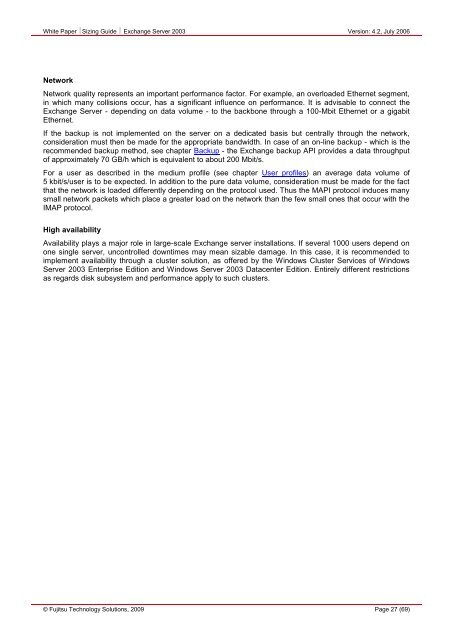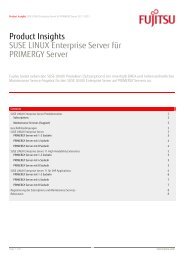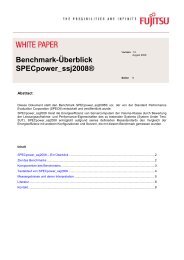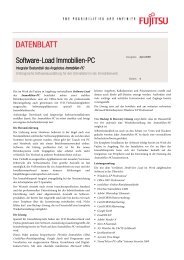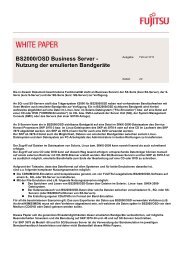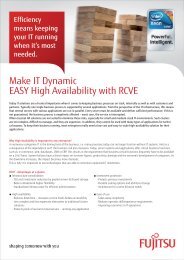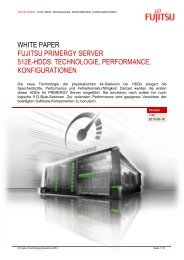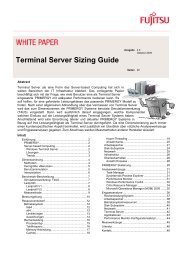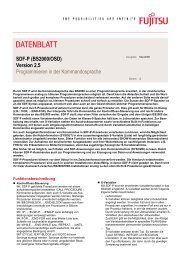Sizing Guide Exchange Server 2003 - Fujitsu
Sizing Guide Exchange Server 2003 - Fujitsu
Sizing Guide Exchange Server 2003 - Fujitsu
You also want an ePaper? Increase the reach of your titles
YUMPU automatically turns print PDFs into web optimized ePapers that Google loves.
White Paper <strong>Sizing</strong> <strong>Guide</strong> <strong>Exchange</strong> <strong>Server</strong> <strong>2003</strong> Version: 4.2, July 2006<br />
Network<br />
Network quality represents an important performance factor. For example, an overloaded Ethernet segment,<br />
in which many collisions occur, has a significant influence on performance. It is advisable to connect the<br />
<strong>Exchange</strong> <strong>Server</strong> - depending on data volume - to the backbone through a 100-Mbit Ethernet or a gigabit<br />
Ethernet.<br />
If the backup is not implemented on the server on a dedicated basis but centrally through the network,<br />
consideration must then be made for the appropriate bandwidth. In case of an on-line backup - which is the<br />
recommended backup method, see chapter Backup - the <strong>Exchange</strong> backup API provides a data throughput<br />
of approximately 70 GB/h which is equivalent to about 200 Mbit/s.<br />
For a user as described in the medium profile (see chapter User profiles) an average data volume of<br />
5 kbit/s/user is to be expected. In addition to the pure data volume, consideration must be made for the fact<br />
that the network is loaded differently depending on the protocol used. Thus the MAPI protocol induces many<br />
small network packets which place a greater load on the network than the few small ones that occur with the<br />
IMAP protocol.<br />
High availability<br />
Availability plays a major role in large-scale <strong>Exchange</strong> server installations. If several 1000 users depend on<br />
one single server, uncontrolled downtimes may mean sizable damage. In this case, it is recommended to<br />
implement availability through a cluster solution, as offered by the Windows Cluster Services of Windows<br />
<strong>Server</strong> <strong>2003</strong> Enterprise Edition and Windows <strong>Server</strong> <strong>2003</strong> Datacenter Edition. Entirely different restrictions<br />
as regards disk subsystem and performance apply to such clusters.<br />
© <strong>Fujitsu</strong> Technology Solutions, 2009 Page 27 (69)


